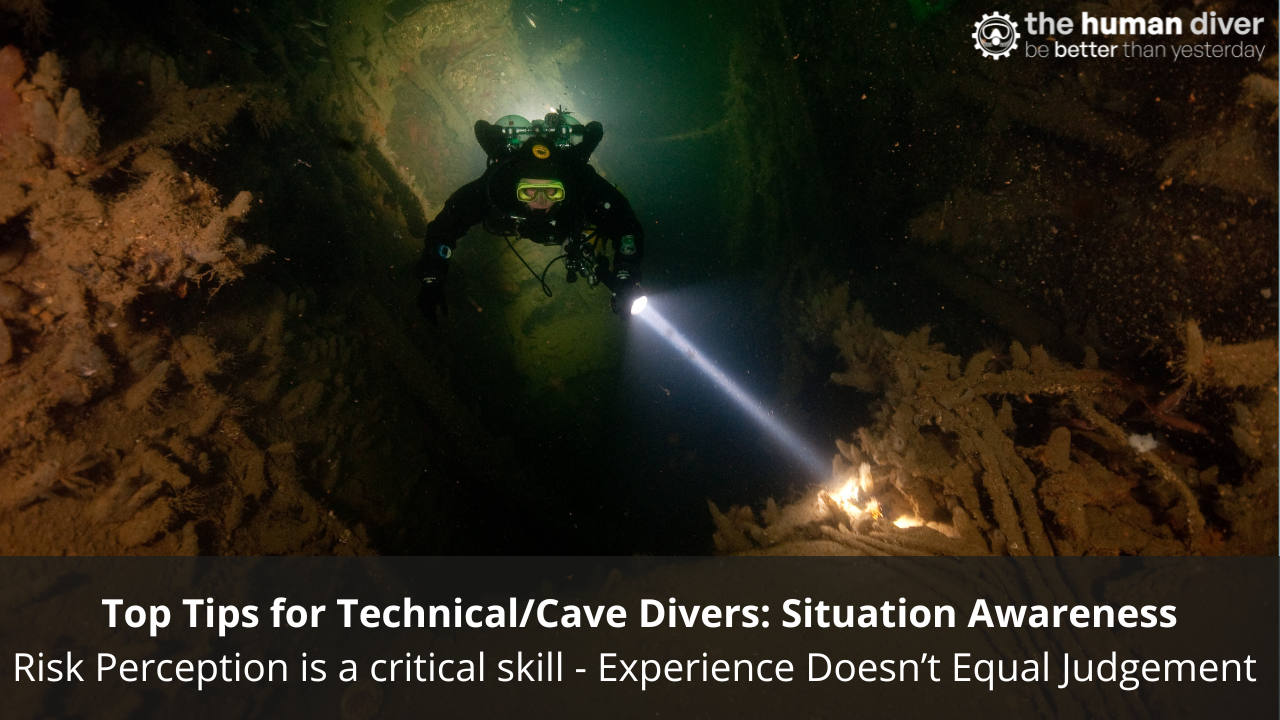
Designing Checklists that work. Slowing down to get it right.
Apr 29, 2025Effective decision-making in diving—and in many other high-risk activities—relies on both intuitive (System 1) and analytical (System 2) thinking. System 1 (S1) is fast, intuitive, and relies on heuristics, while System 2 (S2) is slower, more deliberate, and energy-intensive. Because S1 is efficient but prone to errors, checklists serve as an essential tool to slow us down when making critical decisions, ensuring that key steps are not skipped due to cognitive shortcuts or biases.
The Purpose of Checklists
Checklists have been used in high-risk industries since before World War II to ensure process and safety-critical tasks are completed correctly. They help mitigate human fallibility, especially when we are tired, distracted, or stressed. However, checklists should not replace proper training; rather, they serve as prompts to reinforce learned procedures.
An effective checklist should:
- Support rather than hinder workflow.
- Facilitate cross-checking in team environments.
- Encourage a challenge-and-response format where verification is required.
Principles of an Effective Checklist
Identify the Must-Do Steps
- What actions are essential for safety and success?
- Avoid unnecessary or redundant items—too many steps lead to skipping.
Ensure Logical Flow
- Organise steps sequentially (e.g., top to bottom, left to right, front to back) to prevent confusion and omissions.
- Maintain consistency in how equipment is checked
Keep it Simple and Concise
- Use 5-8 items per phase of a task to maintain focus.
- Limit wording to 5-8 words per step for quick comprehension.
Standardise Across Teams
- A common checklist structure within a team enhances coordination and cross-checking.
- Standardisation helps individuals anticipate and verify key actions.

Point, Touch, Verbalise
- Utilise the Shisa Kanko technique (used in aviation and rail industries) to enhance verification:
- Point at the item.
- Touch the item.
- Verbalise the action and expected outcome.
-
Example: Instead of saying "Gas OK," state "Gas, 210 bar, 32%, pressure stable while pressing purge."
Check for System Response, Not Just Action Completion
- Ensure that actions result in the expected system state, rather than simply completing a step.
- Example: Moving a switch is not enough—verify that the corresponding indicator light or system response confirms the correct function.
-
In diving, pressing an inflation button should result in stable SPG pressure, not just gas flowing momentarily.
Restart if Interrupted
- If a checklist sequence is broken, restart it from the beginning to avoid omissions.
- Using a marker (e.g., pencil or mental bookmark) can help track progress in complex procedures.
Validate Through Peer-Checking
- Peer checks add another layer of safety by catching errors an individual might miss.
- Diving expeditions such as those run by Dirty Dozen Expeditions incorporate final cross-checks as part of standard operating procedures.
The Right Social Environment for Checklists
Checklists are only effective if they are used correctly and valued within the operational culture. If checklists become a "box-ticking exercise" rather than a meaningful error-trapping tool, they will lose their effectiveness. Leaders and team members must understand that checklists exist to manage human variability, not as a punitive measure.
By designing checklists that integrate seamlessly into workflows and reinforcing their importance in decision-making, we create a culture of safety, accountability, and reliability. When implemented properly, checklists become a powerful tool to enhance decision-making and mitigate risk in diving and beyond.

Mike Mason is part of the Human Diver Team. Our mission is to make you better than you were yesterday. If you'd like to deepen your diving experience, consider taking the online introduction course which will change your attitude towards diving and make it more enjoyable and safer. If you’d like to know more, visit the website.
Want to learn more about this article or have questions? Contact us.











